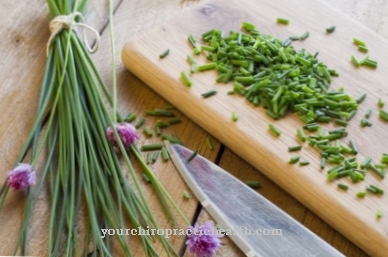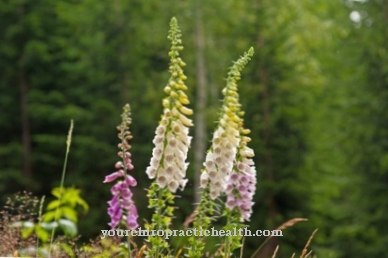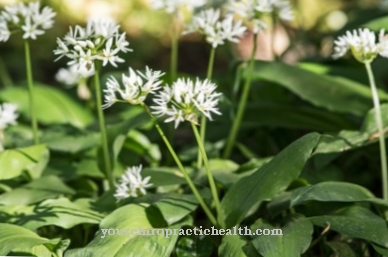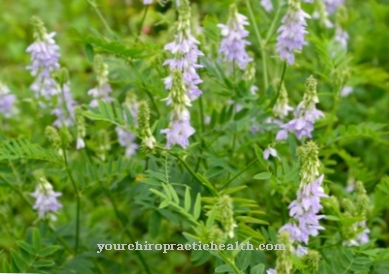The agave was already used by the Aztecs as a food and medicinal plant. Even today, some products made from the desert plant are used in folk medicine for the treatment of diseases and for prevention. However, the user should pay close attention to the dosage.
Occurrence and cultivation of the agave

The agave species that is still used medicinally today Agave americana is one of around 400 agave species that are native to the tropical and subtropical regions of the world. Agaves are special plants: they form an inflorescence at the earliest after 15 years and usually die by the age of 20. The perennial plant actually belongs to the succulents, because like the cacti it has a high water storage capacity.
It grows up to three meters high and has fleshy leaves that are toothed on the edges and sometimes even have thread-like fibers. The pale green agave leaves usually have a lanceolike shape and are provided with a thorn at the tip. Some species have no thorns and showy red tips. Others are bordered by a white border.
The agave leaves serve as a water reservoir so that the plant can survive dry periods well. To prevent the stored liquid from evaporating, the fleshy leaves have tiny pores on their surface. Agaves form spindle-like rhizomes that grow horizontally and are cut off in close proximity to the mother plant to allow the plant to reproduce. To do this, however, the rhizomes must first be at least 15 centimeters long.
The agave inflorescences can be up to twelve meters high and bloom in July / August with many panicles that have single flowers up to ten meters in size. The capsule fruits have three chambers in which the black seeds are located. The agave is found in southern North America, Central America, Venezuela, Colombia and the Canary Islands. Your medically used parts can be collected all year round.
If you want to grow agaves in this country, choose a warm, sunny and dry location for them and overwinter them indoors at four to six degrees Celsius in a bright and cool place. The undemanding plant only needs two parts of ordinary potting soil and one part of coarse-grained sand. The outer leaves can be shortened as desired, as long as the delicate agave core is not damaged.
Effect & application
Agaves contain fructans such as agavin, rhamnose, saponins (hecogenin), xylose (sugar), oxalic acid, essential oils, polysaccharides (especially inulin), beta-carotene and vitamins B, C, D, and K. Since agave products are slightly toxic are, they may only be used externally, homeopathically, in low doses and as an admixture in herbal teas.
The agave ingredients have an antibacterial, anti-inflammatory, blood-sugar-lowering, bone-strengthening, perspiration-inducing, pain-relieving, weight-reducing, diuretic, psychoactive (if overdosed), aphrodisiac and laxative effect. The leaves and the gel and juice in them (agave syrup, agave syrup) are used as remedies.
The syrup contains inulin and is used to sweeten food. The basic sweetener is especially popular with vegans and raw foodists and is obtained from the colorless or yellowish juice of several agave species. It has a high concentration of fructose and a lower content of glucose. Because it has a low glycemic index, it can also be used by diabetics.
The homeopathic agave americana has the same areas of application as the traditionally used plant parts, but is obtained exclusively from the leaves of the Mexican agave. It is given as globules and as a dilution. The agave syrup can - if it accidentally comes into contact with the skin - have a strong skin irritation due to its sharp essential oils and also cause conjunctivitis.
In people with fructose intolerance, the syrup can lead to increased uric acid production, metabolic syndrome and hypertriglyceridaemia. If it is accidentally overdosed, indigestion will result. Pregnant women should not consume it.
Importance for health, treatment & prevention
Because of its laxative effect, agave syrup is an effective light laxative and has an antibiotic and anti-inflammatory effect on stomach ulcers. According to the latest clinical studies, the active substances of the blue agave - from which tequila is extracted - support the immune system in its important task of freeing the body from undesirable substances and pathogens.
According to a clinical study from 2010, the agavin contained in the American agave ensures that the calcium level in the blood increases, which protects the bones from osteoporosis. In this way, calcium is no longer withdrawn from them, although it is more urgently needed elsewhere if there is an insufficient supply. In addition, the increased calcium level has a positive effect on heart health.
In addition, the agave has proven itself as a remedy in traditional folk medicine for back pain, eye diseases, rheumatism and diabetes prevention (agavin). The agave syrup can also be used externally: it is simply applied to wounds, burns, areas affected by skin fungus, warts and ulcers.
In the case of joint inflammation and pain, cut and salted leaf bark is applied. The active substances disinfect, have a decongestant effect, accelerate the healing process and relieve pain. The agave syrup can be used for a short-term detoxification cure, as it has a strong diuretic effect and thus quickly drains inflammatory substances, metabolic degradation products, food toxins and drug residues.
In this way, people with chronic inflammatory diseases can also alleviate their suffering. The sweat-inducing properties are primarily used to lower fever in the case of colds.

























.jpg)


